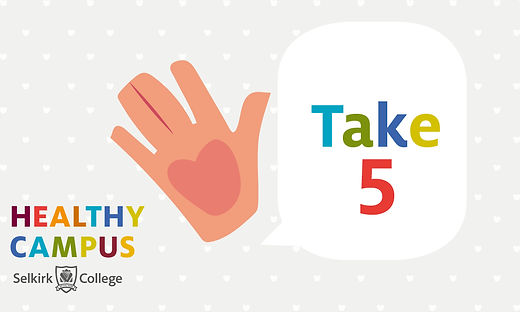Healthy Campus

Academic Stress


Ways to cope with academic stress
There are three keys to making the most of your time and energy: Sleep, Eat and Breath. These are critical to effective studying for college students.
1. Sleep
"Believe it or not, sleep plays a role in your information intake! Sleep is your body’s way to strengthen the neural pathways, which means that you can recall things faster. Sleep also helps tune out the background information of your day that doesn’t really require these pathways, which helps to clear the way for your important points.
An effective study strategy is nightly review, study your notes just before you go to bed to help remember the learned material" (Selkirk College, n.d.).
"Read more on this subject from Scientific American... "Without a nighttime reset, synapses could burn out like an outlet with too many appliances plugged in" (Selkirk College, n.d.).
2. Eat well
"Eating is another key to effective studying. Your brain uses between 20 to 25 per cent of your daily energy, which means that college isn’t the time to drastically decrease your calorie intake. See if you can incorporate a variety of foods, and increase the amount of fruits and veggies in your diet" (Selkirk College ,n.d.).
"It is also essential to eat breakfast as a student, as this sets the tone for how effectively your brain is able to work through the rest of the day" (Selkirk College, n.d.).
3. Breathe
"The third and final key is Breathe, and this is something that we often need to remind ourselves to do. In times of stress, take five minutes to sit and breathe. Take certain points through the day or just before bed to sit and breathe.
See if you can count your breath and slowly make your way to inhale and exhale for 8 counts" (Selkirk College, n.d.).




Try one or more of the following techniques for relaxing your mind and body and reducing the physical and psychological tension associated with stress.
Research has shown that relaxation techniques are an effective way to reduce not only stress but many of the symptoms associated with mental health disorders.
Take the time to experiment with these techniques to find out which ones work best for you.
These quick and easy techniques can be used in many situations when you might experience stress such as during class, while studying, at a party, at work, or when trying to fall asleep.
Stress Reduction Techniques
-
Breathing Exercise: Place one hand on your abdomen right beneath your rib cage. Inhale slowly through your nose, drawing a deep breath into your lungs. Your chest should move only slightly, while your stomach rises, pushing your hand up. As you exhale, just let yourself go and imagine your entire body becoming loose and limp. It should take you twice as long to exhale as it does to inhale. Practice three times per day for two to three minutes.
-
Progressive Muscle Relaxation: Pay a “mental visit” to your muscles, stopping at each area of the body from head to toe (or toe to head), paying attention to individual areas where tension exists. As you pause at each area, tense and relax each muscle, trying to release unnecessary tension. Spend a few more minutes on those areas that seem to be holding the most tension.
-
Visual (Guided) Imagery: Imagine tension flowing out of your body from top to bottom. Visualize tension draining down your shoulders and arms and out through your fingertips into the air, down your thighs and legs, and out through the soles of your feet into the ground. It’s also helpful to take a mental “vacation,” imagining yourself in a pleasant, relaxing place such as on the beach or in the woods. This can be a place where you’ve been or a place you’d like to be. Take time to imagine the specific details of what you see, hear and feel in this place.
(Selkirk College, n.d.)
Mini Mindful!

Try this breathing technique to improve focus, calm down or prepare for a test:
-
Step 1 - Hold our your right hand as if you were giving a high five.
-
Step 2 - Use your left pointer finger to trace the outside of your fingers
-
Step 3 - Use an inhale to slowly trace up the outside of the thumb, and an exhale to slowly trace down the inside edge.
-
Step 4 - Repeat for all fingers.
-
Step 5 - Say five positive things about yourself. (Selkirk College, n.d.)